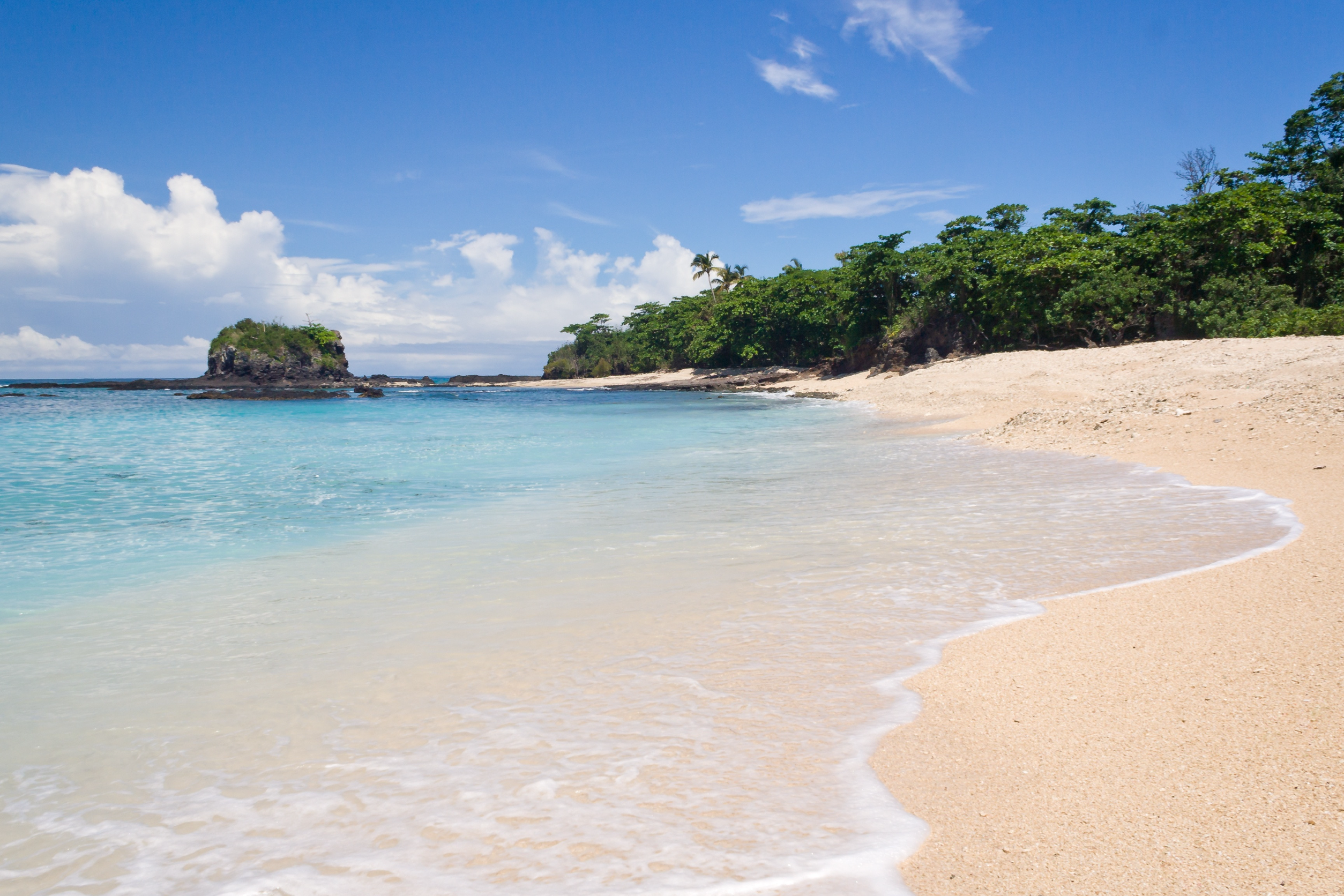Madagascar's Majestic Shores: A Comprehensive Guide to the Best Beaches

The island nation of Madagascar, located off the southeast coast of Africa, is well known for its exceptional biodiversity and distinctive ecosystems. However, beyond its lush rainforests, dramatic landscapes, and endemic wildlife lies a series of coastal paradises that remain one of the world's best-kept secrets.
This guide explores Madagascar's most exquisite beaches, offering a closer look at their beauty, the activities they harbour, and the serene escapades they promise. From the tranquil shores of Ile Sainte Marie to the vibrant waters of Nosy Be and the untouched sands of the West Coast, Madagascar's beaches present a diverse array of experiences waiting to be discovered.
Ile Sainte Marie: A Nostalgic Retreat
Ile Sainte Marie, or Nosy Boraha, captures the essence of a bygone era reminiscent of Bali thirty years ago - serene, untouched, and mystical. This slender island, once a hideout for 17th-century pirates, is now a sanctuary for those seeking tranquillity. Its beaches boast crystal-clear waters fringed by lush vegetation, offering a peaceful retreat.
For the adventurous souls, the waters of Baie des Forban are a diving haven, hiding remnants of pirate ships, while the east coast is a kitesurfer's dream. The island's main town, Ambodifotatra, provides a glimpse into local life with its array of shops, restaurants, and vibrant nightlife.
Transportation on the island is an adventure, with tuk-tuks, bicycles, scooters, and quads available for exploring. The best time to visit is between June and December, with the whale-watching season from July to September being a particular highlight.
- Location: Also known as Nosy Boraha, a serene escape into nature's embrace.
- Vibe: Reminiscent of Bali three decades ago – peaceful, pristine, and untouched.
- Activities: Dive into Baie des Forban for underwater pirate ship explorations or embrace the wind with east coast kitesurfing.
- Local Life: Ambodifotatra, the island’s heartbeat, looks into local culture with shops, restaurants, and vibrant nightlife.
- Transport: Adventure around the island on tuk-tuks, bicycles, scooters, or quads.
- Best Time to Visit: June to December, with peak whale-watching season from July to September.
Nosy Be: Madagascar's Crown Jewel
Nosy Be, often dubbed the 'Seychelles of Madagascar,' is the epitome of island luxury and relaxation. Its development as a tourist hub means visitors can enjoy modern amenities without sacrificing the natural beauty that Madagascar is known for. The island's azure waters and pristine beaches make it a must-visit destination.
Activities range from sunset viewings at Mont Passot, whale watching, and visiting the enchanting Nosy Iranja with its iconic sandbank. Nosy Be is a gateway to incredible snorkelling and diving spots, such as Nosy Tanikely Marine Park and Nosy Sakatia.
The island's accessibility is facilitated by direct flights and ferry services, making it a convenient paradise for visitors. The ideal time to visit is during the dry season from May to October, when the weather conditions are perfect for exploration.
- Reputation: Dubbed the 'Seychelles of Madagascar,' it's a haven of island luxury and relaxation.
- Luxuries: Modern amenities meet natural beauty, offering the best of both worlds.
- Must-Dos: Catch the sunset at Mont Passot, whale watching, or explore Nosy Iranja’s iconic sandbank.
- Diving Spots: Venture into the underwater world at Nosy Tanikely Marine Park and Nosy Sakatia.
- Access: Easily reached by direct flights and ferry services.
- Ideal Season: Visit during the dry season, May to October, for optimal weather conditions.
Northern Madagascar: The Adventurer's Playground
The northern region of Madagascar, accessible via 4x4, offers a different beach experience. Towns like Diego Suarez and Ramena are gateways to magnificent beaches and hubs of cultural interaction and adventure sports like kitesurfing. With its shallow, warm waters, the Emerald Sea is perfect for snorkelling.
These northern beaches are characterised by their laid-back atmosphere, offering a perfect blend of relaxation and adventure. Visiting these areas requires more effort, but the rewards are unparalleled, with stunning landscapes and the opportunity to engage with local communities.
- Experience: Offers a raw and adventurous beach experience accessible via 4x4.
- Key Locations: Diego Suarez and Ramena are gateways to culture and adventure sports like kitesurfing.
- Highlight: Snorkel in the warm waters of the Emerald Sea.
- Atmosphere: A laid-back vibe with a perfect mix of relaxation and adventure, engaging with local communities.
- Effort vs Reward: It requires more exploration but rewards with stunning landscapes.
Madagascar's West Coast: The Road Less Travelled
The West Coast of Madagascar, stretching between Tulear and Morondava, presents a more rugged and untamed beach experience. This part of the island is less frequented by tourists, offering golden sands and clear waters amidst a backdrop of traditional Vezo culture.
The beaches here, such as Ifaty, Madiorano, Salary, and Andavadoaka, offer a rustic charm and a chance to disconnect from the world. Tulear, despite not having the best beaches, marks the end of the iconic RN7 road trip and provides a worthy stopover with unique accommodations like Bakuba Lodge.
- Terrain: Rugged and untamed, it offers a less frequented beach experience with traditional Vezo culture.
- Beaches: Discover the rustic charm of Ifaty, Madiorano, Salary, and Andavadoaka.
- Tulear: Noted for marking the end of the RN7 road trip, with unique accommodations like Bakuba Lodge.
- Experience: Ideal for those looking to disconnect and immerse in nature.
Embarking on a Madagascar Beach Adventure
Planning a road trip to explore Madagascar's beaches combines adventure with discovering hidden gems along the island's coastline. Whether opting for a self-drive itinerary to explore at your own pace or seeking out specific destinations for activities like diving, kitesurfing, or simply soaking in the sun, Madagascar's beaches cater to all desires. It is imperative to consider the practical elements of such a journey, from selecting the right vehicle to understanding the best times to visit different regions.
- Journey: Combine adventure with the discovery of hidden coastal gems.
- Travel Style: Opt for a self-drive itinerary for flexibility or specific destinations for activities like diving and kitesurfing.
- Considerations: Select the right vehicle and understand the best times to visit for an optimal experience.
Conclusion
Madagascar's beaches are not just destinations; they are experiences that promise to leave visitors with a sense of wonder and a deeper appreciation for the island's natural beauty. From the serene shores of Ile Sainte Marie to the bustling vibes of Nosy Be and the untouched landscapes of the West Coast, each beach tells its own story.
This guide serves as a testament to the diverse and rich coastal life of Madagascar, inviting travellers to delve into the heart of this island nation's paradisiacal offerings. As you plan your journey, let the spirit of adventure guide you to the shores of Madagascar, where the rhythm of the waves echoes the call of the unknown, waiting to be discovered.
FAQS
How can I access the northern beaches of Madagascar?
The northern beaches, including areas like Diego Suarez and Ramena, are best accessed via 4x4. This region offers a mix of cultural interaction, adventure sports like kitesurfing, and the chance to snorkel in the warm waters of the Emerald Sea.
Can you recommend some activities to do on Ile Sainte Marie?
Yes, Ile Sainte Marie offers a range of activities for both adventure seekers and those looking to relax. You can dive into Baie des Forban to explore underwater pirate ship remnants, enjoy kitesurfing on the East Coast, or experience the local culture in Ambodifotatra with its shops, restaurants, and vibrant nightlife.
Are there specific considerations when planning a road trip to explore Madagascar's beaches?
Yes, when planning a beach road trip in Madagascar, it's crucial to consider the practical aspects, such as selecting the right vehicle for rugged terrain and understanding the best times to visit different regions to maximise your experience.
What is Madagascar's famous food?
The two “national” accompanying dishes are romazava, a meat stew with green leafy vegetables with a distinctive taste (brèdes) and ravitoto, stewed pork with shredded manioc leaves. Other specialities include eel with pork, pork with butter beans and kitoza (dried and smoked meat or fish).
What is the currency of Madagascar?
The Malagasy Ariary is the name of the local currency in Madagascar. The euro is the most commonly accepted foreign currency, although US dollars and GBP can be easily exchanged. Bank exchange services and nearby ATM withdrawals are available.
Get Your Madagascar eVisa
Step1: Complete the online application form by providing your passport details.
Step2: Safely process your payment using your credit card through our secure online platform.
Step3: Monitor your email for payment verification and the electronic dispatch of your eVisa.
